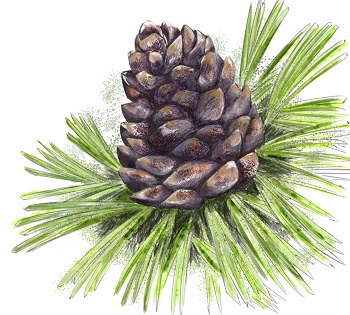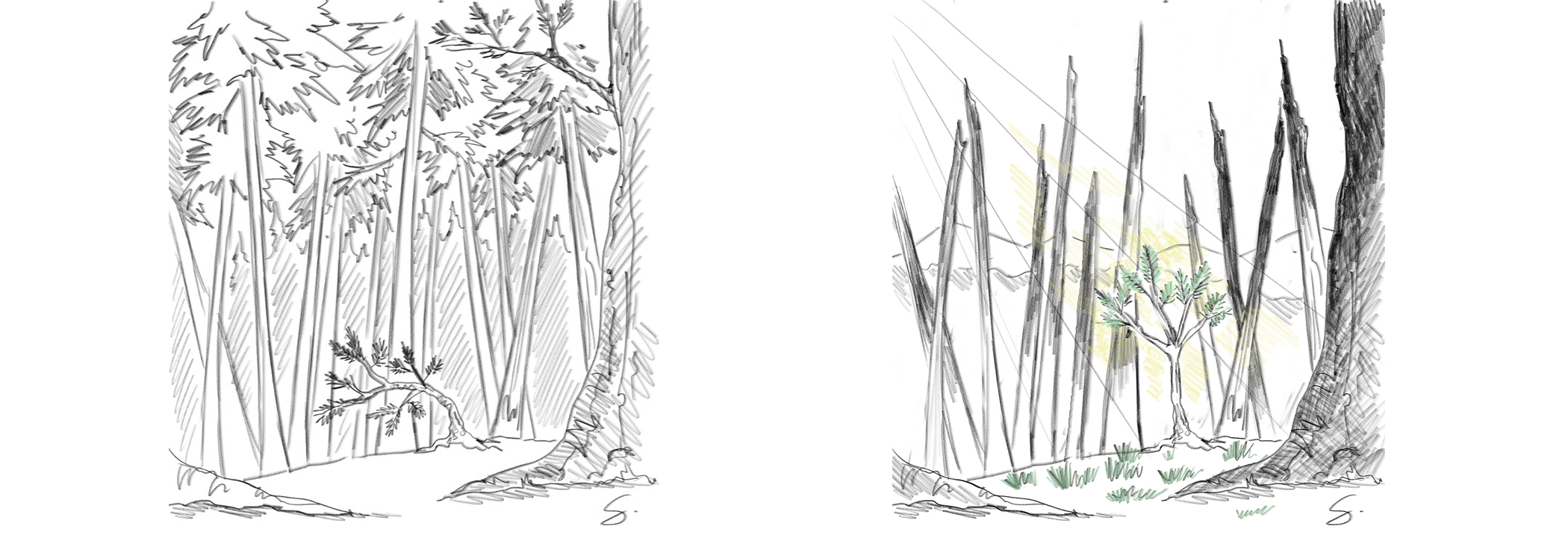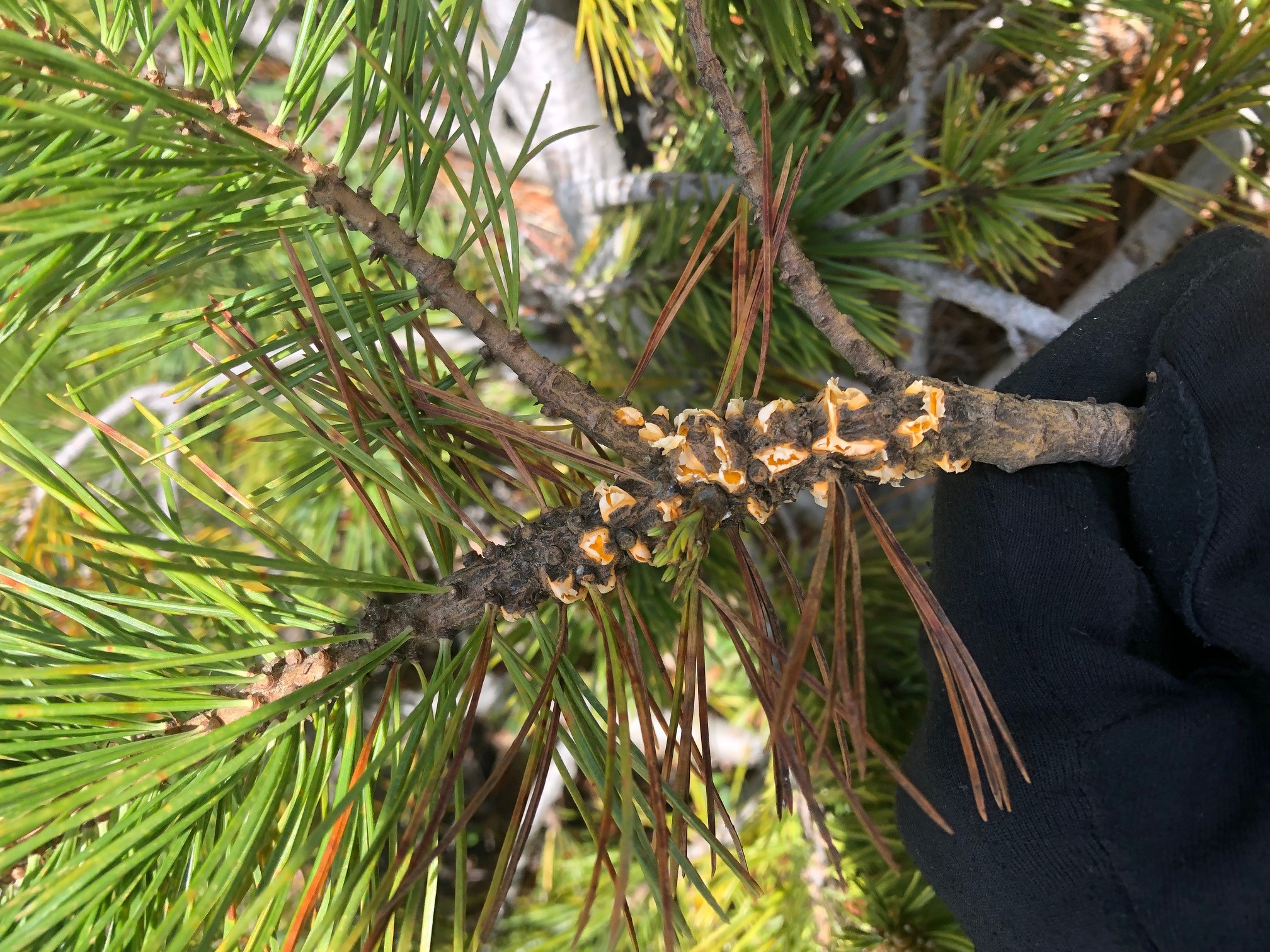
Whitebark pine
Banff National Park
Quick Facts
Height 5-20 metres
Needles In clumps of 5
Cones Egg-shaped
Life span Up to 1000 years
Status: Endangered

High in the mountains, a lone whitebark pine tree stands its ground against the strong winds, heavy snow, and blistering cold temperatures. This tree is tough.
Whitebark pine grows in sub-alpine areas of Banff National Park. As a keystone species, it provides food and habitat for wildlife, stabilizes mountain slopes and holds onto the snow pack. This makes water available to other plants and prevents flooding in the spring.
Whitebark pine trees produce some of the most nutritious seeds in the Canadian Rockies. Packed full of protein and fat, these pea-sized seeds are eaten by bears, squirrels and birds like the Clark’s nutcracker.
Why is the whitebark pine in danger?
As tough as this tree is, it is declining throughout its home range. White pine blister rust, mountain pine beetle, historical fire suppression and climate change are to blame.
- White pine blister rust is an introduced fungus that affects all five-needle pines.
- Mountain pine beetle is a native species that is spreading up-slope due to climate change.
- Over the years, fire suppression has caused our forests to become dense, reducing biodiversity and leaving fewer open spaces for this sun-loving tree to grow.

White pine blister rust

White pine blister rust is a serious disease caused by fungus that affects all five-needle pines. The rust infects whitebark and limber pine through their needles and spreads into the inner bark (phloem) of the tree. As the infection grows, the bark and phloem die.
Less than 1% of all whitebark pine trees are blister rust resistant.
Where to see this sensitive tree
If you look for whitebark pine in the late summer/fall, watch and listen for Clark’s nutcrackers collecting the seeds.
Common spots to spot Clark’s nutcrackers in Banff National Park: Sulphur Mountain, Cascade Mountain, Cory Pass, Mount Norquay, Parker Ridge, Molar Pass, Sheol Valley and Bow Lake.
An important partnership
Whitebark pine and Clark’s nutcrackers depend on each other for survival. Whitebark pine cones are unable to open on their own and spread their seeds. Clark’s nutcrackers are perfectly suited for this task.
What are we doing to help this sensitive species?

Recovery actions include:
Monitoring
- Monitoring whitebark pine and limber pine populations.
- Recording annual cone production.
Seed science
- Sending seeds to the National Tree Seed Centre where they get frozen and stored.
- Sending seedlings to provincial partners in British Columbia to test how resistant the seedlings are to blister rust.
Education
- Educating the public on the importance of five-needle pine conservation.
- Working with local businesses to share information on five-needle pine conservation and identification.
Active restoration
- Using fire to open up spaces for healthy whitebark pine trees to grow.
- Collecting cones and planting seedlings that are resistant to blister rust.
- Using chemical patches on trees to deter mountain pine beetles.
Landscape-level conservation
- Contributing to inter-agency research projects to focus on five-needle pine recovery across its entire range.
Contact
Banff Field Unit- pc.banff.fireinfo-infofeu.banff.pc@canada.ca
Lake Louise, Yoho and Kootenay Field Unit- pc.feullyk-llykfire.pc@canada.ca
- Date modified :